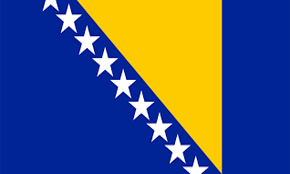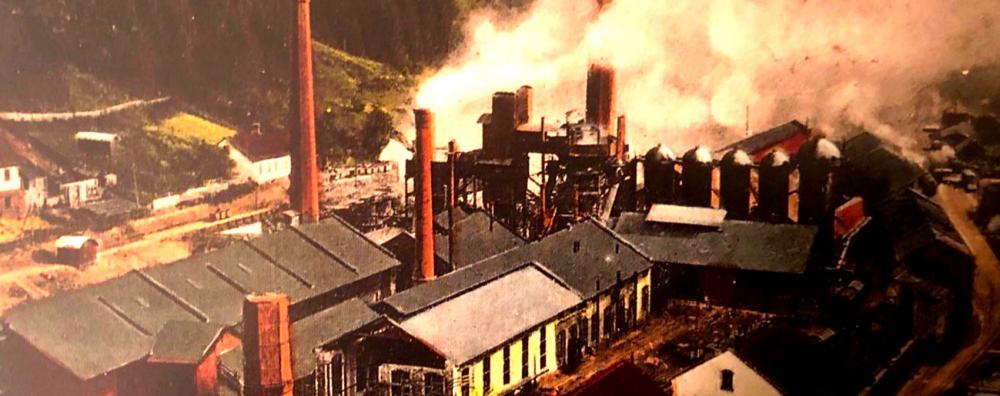Vareš and the future of the mine
general
16 September 2019
Europeans used to come to work in the town at the foot of the Star.
Perhaps most of you reading this have never been to Vareš, but everyone has certainly heard of this Bosnian hill town in the valley of the river Stavnje and at the foot of Zvezda Mountain. This place, 45 kilometers from Sarajevo, 74 kilometers from Zenica and 85 kilometers from Tuzla has long been known for mining, mining for ore and the processing has for generations been the core business of this area.
The mine in Vareš was the largest iron ore mine in the Balkans and became the nursery for mining in Europe. Available data says that iron ore was being mined and smelted back in ancient times.
Although there are a few traces that have been preserved of this, such as a plaque labelled "villicus procurator" which marked the title of mine supervisor and mining lamp. It is clear that the Romans had already exploited ore here and paved the way for mining in the Bosnian town.
A significant discovery of ore in the 13th century began with the settlement of people from Dubrovnik in this area, and in the following centuries, thanks to rich workings, people settled Sassas from Germany, Hungarians, Czechs, Slovenes and many others. Surnames from these people are still found among the Varešaks today.
In the 15th century, the village of Duboštica was mentioned as the main mining centre of this region. Because of the mineral wealth, King Tvrtko, as well as all other rulers and those who occupied Bosnia in the following centuries, considered Vareš a real treasure trove of wealth.
At the beginning of the work on the mine, the workshops were located on a hill called Oglavic, and then moved to the valley of the Stavnje River. With the arrival of the Ottomans, mining in Vareš was revived and intensive mining began as well as the smelting of iron ore, and the production of iron goods.
During the time of the Bosnian Governor of sandžak-bey Jakub-pasha Hadum in the period from 1489 to 1493, the exploitation of mineral resources in the Vareška area was recorded.
Weapons and equipment
The Vareš region became especially important when it became the centre of production for special weapons and equipment for the needs of the Ottoman Empire, which is why Vareš became a Nahi, at the end of the 17th century.
At that time, people, apart from weapons, forged various items such as swords, sticks, axes, knives and the like, that were sold by middlemen throughout the Ottoman Empire at that time.
Shutting down the Maidan
Vareš grew with production as well and experienced a real economic revival with the arrival of Austro-Ugar. The former Majdans, whose name has remained to this day for the excavation of either gravel or some ore in BiH, are closed. In 1891 the first blast furnace was lit, marking the beginning of the economic rise of Vareš.
The increase in production shows that on October 7, 1895, a narrow-gauge railway line Podlugovi - Vareš was set up to connect the town with the Bosanski Brod - Sarajevo railway line.
The second blast furnace was erected in 1896 and iron ore mines were opened in Smrec, Droskovac and Przici.
As mining began to develop at the beginning of the Warez ironworks, the best evidence in 1880, shows that 2,305 tons of ore were mined, and alternative available data states that 219,131 tons were mined in 1913, which could mean almost a hundred times more was mined than before.
In the 20th century, except for iron ore, Vareš became famous for siderite, limonite, hepatitis. In the vicinity of Veovaca there is a deposit of lead-zinc ore and barite.
More workers than residents
After World War II, mining was increased. This was aided by the development of technology and better management of the mines, as well as improved working conditions. In 1975, about 3 million tons of ore were mined. At that time, the Vareška mine was supplying ore not only to its ironworks but also to the Zenica mine and other republics of the state, Sisak, Jesenice and Smederevo.
The iron ore mine employed 1,180 workers, the 890 ironworks, the quarry 30, the lead, zinc and barite mines 120, and hundreds of workers were employed, through more companies whose production was reliant on mining.
Vareš was a city known for having more workers than residents because they came from surrounding towns.
However, the last war, as well as the post-war period, with the looting of the facilities and the negligent attitude of the state towards one of the areas with the largest mineral resources, has made Vareš today at the top of the list of the poorest municipalities in our country. In the city where Europeans used to come by the "belly for bread", today there are more than twice as many inhabitants as in 1991.
The collapse of mining, which has led to the downfall of many other activities and destroyed the existence of many families, forced many to an economic exodus. While the Varesha Hills are still hiding, some 200 million tonnes of iron ore deposits are assumed.
Today, the authorities in the municipality of Vareš are still trying to get all the roads as they once did to this mountain town. They have launched a series of activities on this, and the state has a million reasons to support them.



